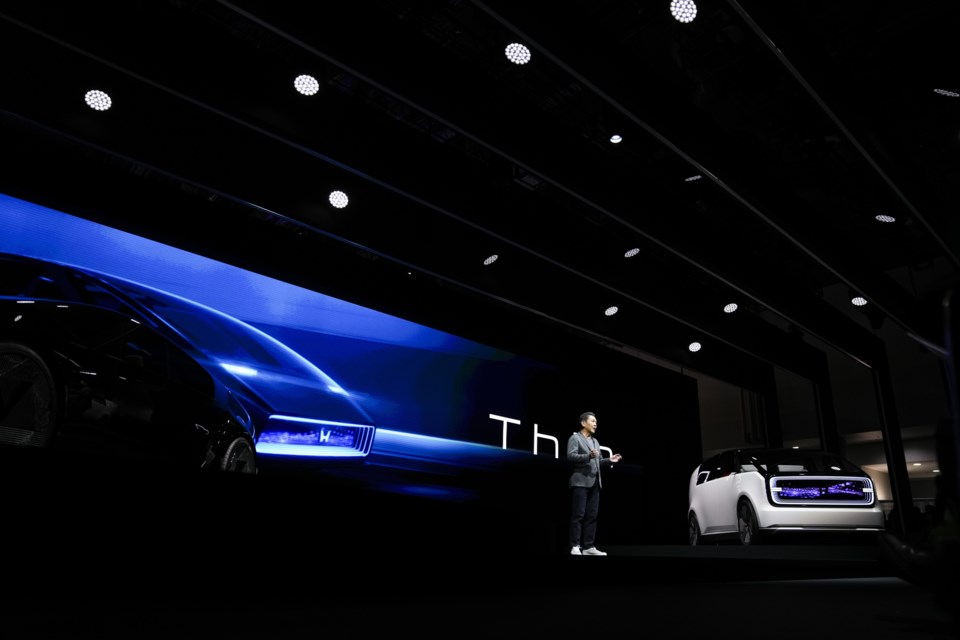LAS VEGAS (AP) — From electric cars to transparent TVs to the latest accessibility tech and virtual assistants backed by artificial intelligence, there was a wide range of innovations on display at the CES tech show in Las Vegas this week. The best of it aimed to solve big real-world problems. Some of it aimed to make your life more fun. And some of it was just a little out there.
Associated Press journalists spent last week combing cavernous exhibit halls for the most exciting, interesting and unusual tech innovations.
Here’s what caught our eye at CES 2024.
ACCESSIBILITY PRODUCTS WERE BIG ON HOPE
At a conference where excess and opulence manifested itself in nearly everything, it was encouraging to see how much progress has been made toward developing assistive technologies for the disabled.
Boston-based GyroGear, a medical tech startup, debuted a hand-stabilizing glove at CES 2024 that it hopes will help Parkinson’s patients and those with hand tremors regain control of their lives. Dutch startup Whispp is using audio-to-audio-based AI to give people with vocal impairments a chance to have real-time conversations in their own natural voices. OrCam introduced a host of devices designed to help those with hearing loss deal with auditory overload. And Sony reserved some prime space in its booth to showcase its Access controller for PlayStation.
MAKING CONNECTIONS BETWEEN NEARLY EVERYTHING
Using software and AI to achieve inter-device connections between smart devices, your home and even your car was central to many of the biggest tech companies at CES 2024.
Samsung's new “AI for all” mantra meant integrating its smart home devices and appliances to perform tasks in unison — like the act of recipe selection automatically pre-heating your oven. The South Korean tech giant also announced a collaboration with Hyundai to develop “home-to-car” and “car-to-home” services for all Kia and Hyundai vehicles. Google is expanding Chromecast to more apps and devices. And Amazon endorsed the Matter casting standard to create more inter-operability between smart devices.
Meanwhile, Mercedes-Benz unveiled a new AI-powered virtual assistant to personalize interactions between drivers and their cars.
VEHICLES ADVANCES WERE ON FULL DISPLAY
CES 2024 was brimming with new electric vehicles, remote construction vehicles, hydrogen engines and other mobility advances.
Honda premiered two concept cars, dubbed the “Saloon” and “Space-Hub,” for a new global EV series. Kia decided to go modular with a trio of electric vans that can quickly swap body modules to change their functionality. And Vietnam-based electric upstart VinFast unveiled an electric truck concept.
Bosch Mobility and Hyundai both doubled down on hydrogen as an energy solution. And Hyundai showcased its AI-based autonomous construction excavator.
HOPE YOU'RE HUNGRY
Chef-like robots, AI-powered appliances and other high-tech kitchen gadgets are holding out the promise that humans don’t need to cook — or mix drinks — for themselves anymore.
GE wants you to start smoke food indoors, while generative AI is powering a Brisk smart grill that aims to make the art of barbecuing foolproof.
Freezing your own ice cream at home takes hours, but ColdSnap’s new ice cream machine prepares your frozen treat in two minutes. And Bartesian’s cocktail-mixing appliance can make as many as 60 different kinds of drinks for you.
Meanwhile, for much younger consumers (and their parents), Veba Baby's smart baby bottle monitor tracks the expiration of breast milk and formula. The product — which also serves as a bottle locator — monitors the temperature, when a baby feeds from the bottle, and more to detect freshness. And everything is logged onto an accompanying app.
WHAT'S NEW ON TV?
OLED, Micro LED, 8k ... what does it all mean? It means you see an extremely sharp image, but the most interesting TVs on display this CES were barely visible at all.
Consumer electronics giants LG and Samsung unveiled transparent TVs at the show.
Almost invisible when turned off, LG’s 77-inch transparent OLED screen can switch between transparent mode and a more traditional black background for regular TV mode. Samsung’s transparent MICRO LED-powered display worked in a very similar way, but was on display as a concept.
When not being watched as a traditional TV, both can be used as a digital canvas for showcasing artworks, for instance.
___
Associated Press reporters Wyatte Grantham-Philips, Rio Yamat, McKinnon de Kuyper and Shawn Chen contributed to this report.
The Associated Press



